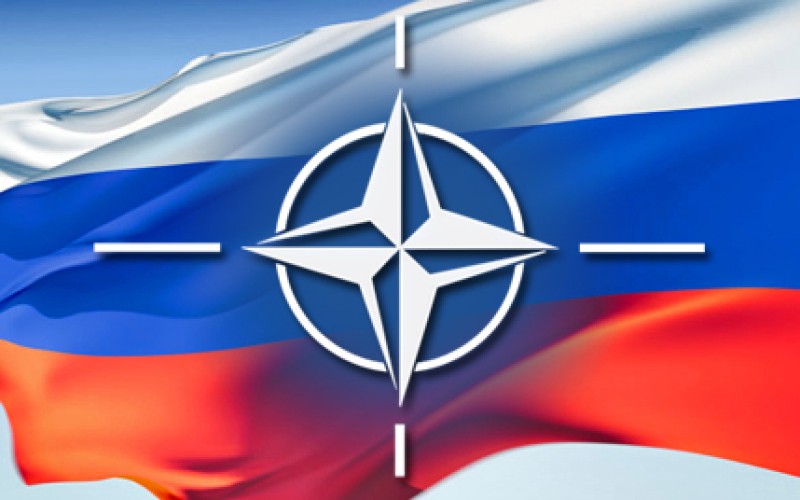Heads of the North Atlantic Treaty Organization (NATO) are considering sending 4,000 ground troops in to Poland, Lithuania, Latvia and Estonia as a response to Russia’s actions in the Crimea and Ukraine. Could war be on the horizon? What are the alternatives to securing peace?

If there is one thing we have learnt from history it is that wars are costly and messy affairs. Despite this, is seems as if NATO’s brinksmanship strategy may push America and its European partners into a threatening confrontation with Russia, a situation they have been working hard to avoid.
NATO has been keeping a close eye on the prevailing situation in Ukraine and during the Wales summit in September 2014 condemned Russia’s annexation of Crimea, the military intervention in Ukraine, and demanded Putin comply with international law and immediately stop the flow of arms and money to separatists.
Despite the long-held ceasefire and relatively stable situation in Eastern Ukraine now, NATO is considering a response to calls from its Baltic members and Poland to bolster defenses by increasing its presence in the region by stationing troops on the border with Russia. This will serve as a form of ‘costly signaling’ by sending a message to Moscow that the blue army is committed to defending its members, which they hope will curb Putin’s enthusiasm in the region. Not likely.
Moreover, this illustrates a dangerous move by the West and, in fact, may elicit the opposite response from the Kremlin. Putin has already stated that it sees NATO as a security threat in the region, despite a range of agreements between NATO and Russia that aim to frame the relationship between the two powers as one based on mutual cooperation. In fact, Russia even blames NATO expansion for the troubles in Ukraine.
Worst case scenario
What can we expect Russia’s response to be if the troop movement goes ahead? Worst-case scenario – war. Taking into consideration the history between these two military giants, Moscow will see this move as a major and unwarranted provocation by the West. We can expect two immediate responses by Russia.
First, Putin will order a mirrored response and station his own troops on Russia’s side of the Ukrainian border to keep NATO at bay, thus reinstating another ‘iron curtain’ between Europe and Russia, only this time moving it more eastwards.
Second, Putin will order a full invasion into Eastern Ukraine thus automatically calling off the ceasefire and potentially capturing the demilitarized zone, thus expanding its influence and dominance over the region.
Neither side would push for this to happen. However, in its current form, it is NATO’s war to start.
Germany has been outspoken regarding their opposition to NATO’s proposed plans by expressing a lack of resolve in the stationing of troops which it believes will elicit a response from Russia which will, in the best case scenario, break the ceasefire, and worst case scenario, spark a war.
EU intervention and resolution
With Russian armed forces equipped with approximately 750,000 ground troops, 15,000 tanks and an array of highly advanced military machinery, making them second in military might only to the US, war seems to be a very inefficient, lengthy and costly way of gaining concessions. So what are the alternatives?
There is one solution that the three parties can agree too. It is important to note that at the moment the Ukraine is in an isolated position diplomatically. It is in Europe yet it is not officially associated with either the EU or NATO, putting it in a very vulnerable position. The majority of countries in Europe have ties to either one of these international organizations thus ensuring economic benefits, military protection or both.
NATO must take a back seat and allow the EU to maneuver, taking steps forward in advancing membership to Western Ukraine. In doing so, it will place the Ukraine under its protection while at the same time demonstrating a more diplomatic face to Russia which will relieve tensions, at least momentarily.
This leaves the demilitarized zone including separatist controlled Eastern Ukraine. The demilitarized zone must be jointly negotiated over by the EU, Ukraine and Russia.
In this case, we could expect to have a new Ukraine in the EU by approximately April 2016, a content Russia who sees Eastern Ukraine as ethnically Russian and an averted war. This resolution may be a hard pill to swallow for Ukrainian nationalists and backlash from the Balkan EU candidate countries such as Albania and Serbia would be expected.
What matters in the immediate future is that tensions are released and war is averted. This will not be the case if NATO follows through with its troop stationing plans. It must find ways to assure its eastern members that fighting fire with fire is not a smart defense strategy while at the same time engaging with the EU so an alternative route to peace with Moscow based on mutual understanding and clear intentions can be found.
sourche: http://globalriskinsights.com/2015/11/will-nato-trigger-a-war-with-russia/

Δεν υπάρχουν σχόλια:
Δημοσίευση σχολίου